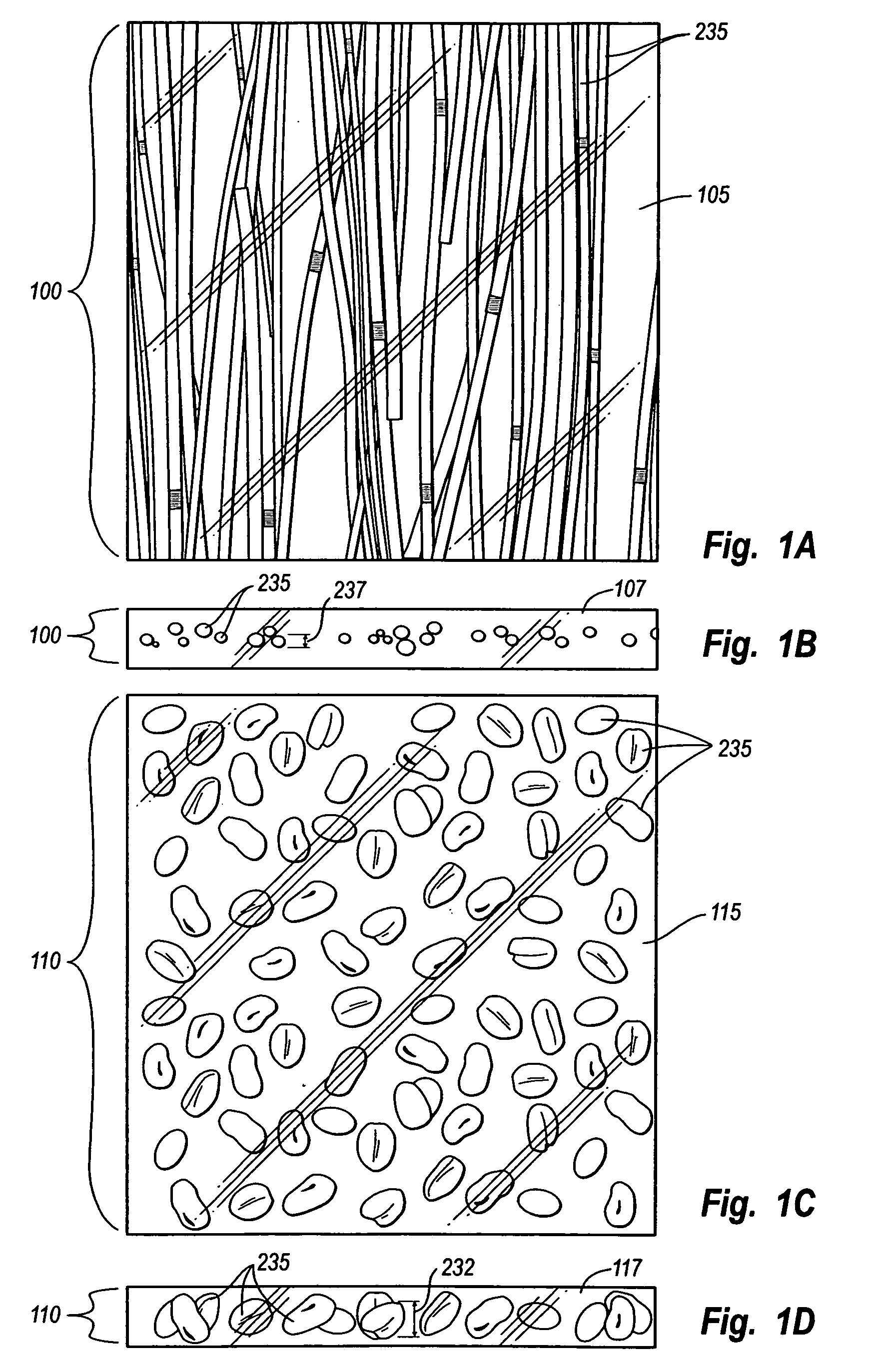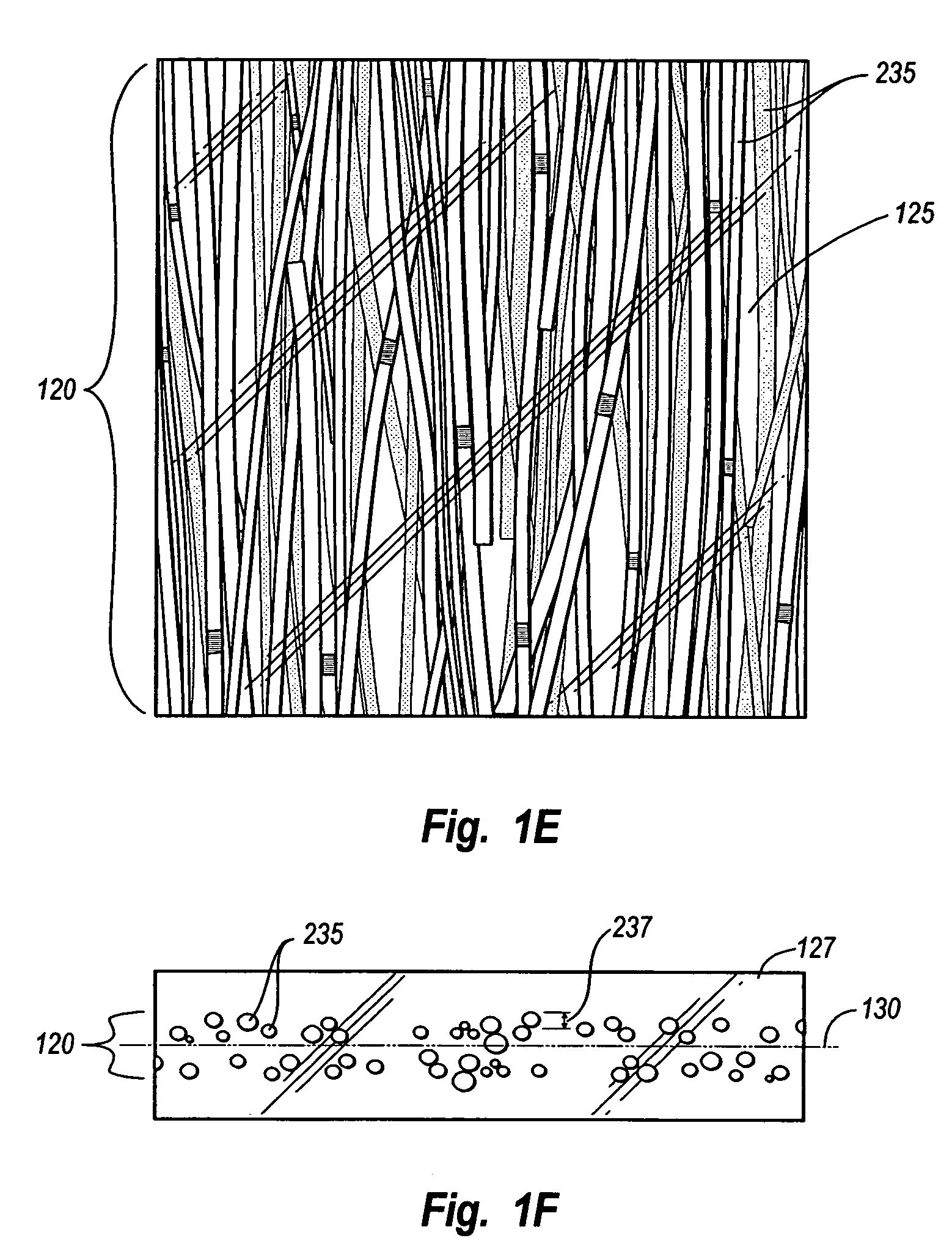Architectural laminate panel with embedded compressible objects and methods for making the same
a technology of compressible objects and architectural laminates, applied in the field of decorative laminate products and processes, can solve the problems of high manufacturing cost, inability to embed compressible objects (i.e., relatively soft objects, in extruded sheets using the pressure of conventional processing methods,
- Summary
- Abstract
- Description
- Claims
- Application Information
AI Technical Summary
Benefits of technology
Problems solved by technology
Method used
Image
Examples
Embodiment Construction
[0028]The present invention extends to both methods and systems that allow compressible objects to be embedded in extruded laminate materials without flattening the objects, and without significantly trapping air. In particularly, processing methods as detailed herein allow compressible objects, such as thatch, willow reed, coffee beans, bamboo, and similar objects to be embedded within opposing, extruded laminate sheets.
[0029]As used herein, “compressible objects” refers to three-dimensional objects that substantially deform at pressures up to 80–90 psi. That is, each “compressible” object can be thought of as having a “critical pressure”. For the purposes of this specification and claims, “critical pressure” refers to the pressure at which the structural integrity of the object collapses, such that the object splits, cracks, or otherwise compresses into an unnatural conformation. There are, of course, varying grades of collapse, or compression, for any given compressible object, s...
PUM
| Property | Measurement | Unit |
|---|---|---|
| thickness | aaaaa | aaaaa |
| thickness | aaaaa | aaaaa |
| thickness | aaaaa | aaaaa |
Abstract
Description
Claims
Application Information
 Login to View More
Login to View More - R&D
- Intellectual Property
- Life Sciences
- Materials
- Tech Scout
- Unparalleled Data Quality
- Higher Quality Content
- 60% Fewer Hallucinations
Browse by: Latest US Patents, China's latest patents, Technical Efficacy Thesaurus, Application Domain, Technology Topic, Popular Technical Reports.
© 2025 PatSnap. All rights reserved.Legal|Privacy policy|Modern Slavery Act Transparency Statement|Sitemap|About US| Contact US: help@patsnap.com



